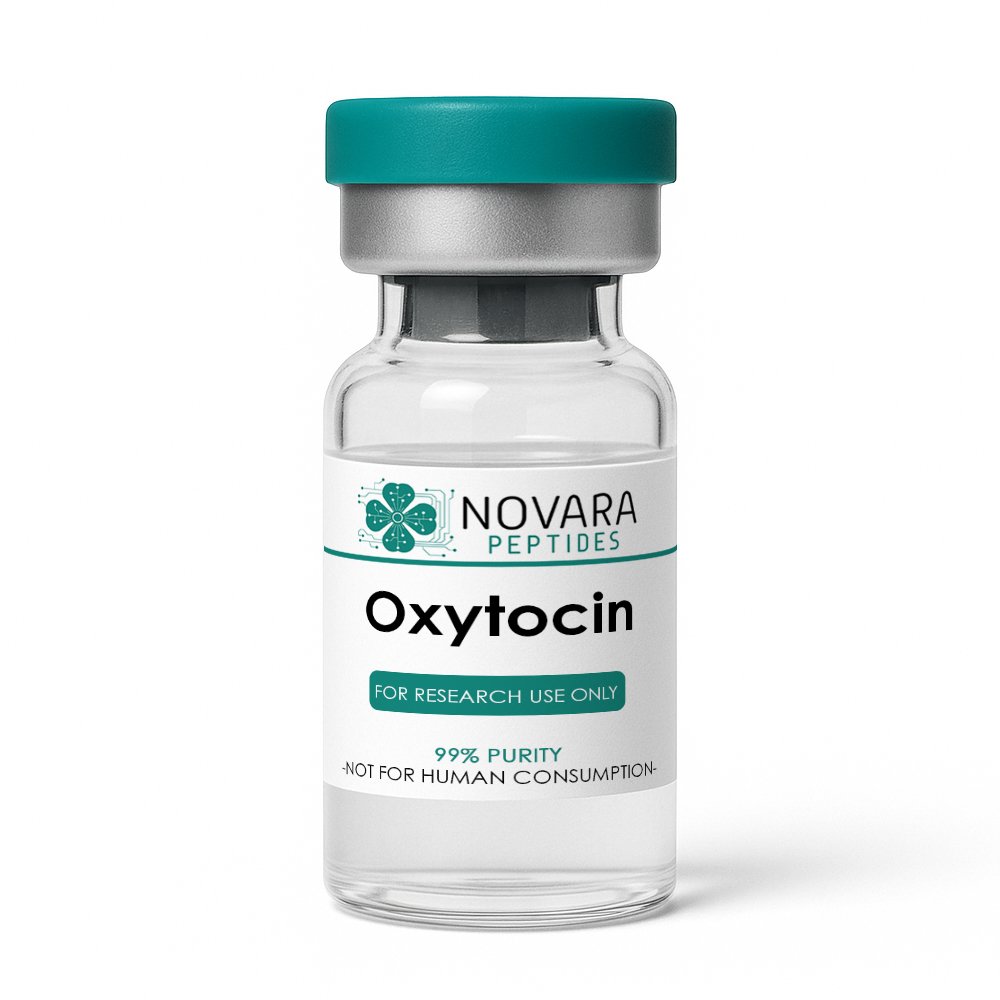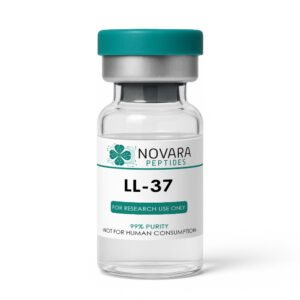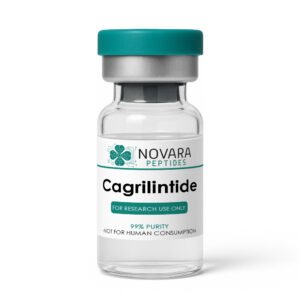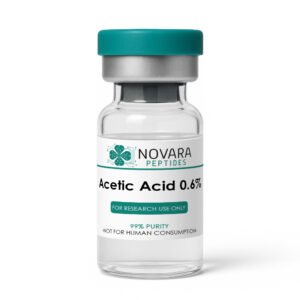Oxytocin – 2mg
$ 39.00
All products are for laboratory research purposes only. Not for human consumption, medical, or veterinary use. ION Peptides does not condone or support the use of peptides outside of controlled scientific research. By purchasing, you acknowledge that you are a qualified researcher or institution. You must be 21 or older.




Oxytocin
Research-Grade Neuropeptide Hormone
Tagline: Social Behavior & Endocrine Research
Product Description
Oxytocin is a cyclic nonapeptide hormone synthesized in the hypothalamus and secreted by the posterior pituitary. It plays a critical role in social bonding, stress modulation, reproduction, and parturition.
Researchers use oxytocin in preclinical and in vitro models to explore its effects on maternal behavior, pair bonding, trust, lactation, uterine contractility, and the hypothalamic-pituitary-adrenal (HPA) axis. It is also studied for its role in neuropsychiatric and stress-related disorders.
For Laboratory and Scientific Research Use Only. Not for Human Consumption.
Why Researchers Choose Oxytocin
Highly Conserved Neuropeptide: Well-characterized structure and receptor system across species.
Social Neuroscience Tool: Widely used to study bonding, trust, and prosocial behavior.
Reproductive Research Applications: Critical in parturition and lactation physiology studies.
Stress & Anxiety Research: Modulates HPA axis and amygdala reactivity.
Batch Verified: ≥98% purity, HPLC-tested for consistency.
Important Note
For laboratory and scientific research only. Not for human consumption, therapeutic, or diagnostic use.
| Chemical Formula | C₄₃H₆₆N₁₂O₁₂S₂ |
| Molecular Mass | ~1007.2 Da |
| CAS Number | 50-56-6 |
| Form | Lyophilized peptide powder |
| Shelf Life | 24 months (lyophilized) |
| Intended Use | For preclinical and in vitro research only |
| Storage | -20 °C (dry powder), -80 °C (after reconstitution) |
Research Applications
Social Bonding & Behavioral Neuroscience
Oxytocin administration has been shown to increase trust, pair bonding, and prosocial behavior in animal models and human studies [1].
Reproductive Endocrinology
Essential for uterine contractions during labor and milk ejection during lactation, making it a key hormone in parturition studies [2].
Stress & Anxiety Regulation
Research shows oxytocin modulates the HPA axis, reducing cortisol levels and dampening stress responses [3].
Neuropsychiatric Disorder Models
Explored as a modulator in studies of autism spectrum disorder, PTSD, and social anxiety [4].
References
Kosfeld M et al. (2005). Oxytocin Increases Trust in Humans. Nature.
https://www.nature.com/articles/nature03701.pdfFuchs AR et al. (1991). Oxytocin and Parturition: Endocrine Control of Uterine Contractility. Biol Reprod.
https://www.ajog.org/article/0002-9378%2891%2990399-C/fulltextNeumann ID (2008). Oxytocin and Stress Regulation: HPA Axis Modulation. Prog Brain Res.
https://onlinelibrary.wiley.com/doi/pdf/10.1111/j.1365-2826.2008.01726.xGuastella AJ et al. (2010). Intranasal Oxytocin and Social Cognition in ASD. Biol Psychiatry.
https://www.sciencedirect.com/science/article/pii/S0006322309011226
Mechanism of Action (How Oxytocin Works)
OXTR Receptor Activation: Binds to oxytocin receptors (OXTR), a GPCR, triggering phospholipase C and IP₃-mediated Ca²⁺ release [Fuchs 1991].
Uterine Smooth Muscle Contraction: Increases intracellular calcium, promoting myometrial contraction [Fuchs 1991].
Central Nervous System Effects: Modulates amygdala and hypothalamic circuits involved in social behavior and emotion [Kosfeld 2005].
HPA Axis Suppression: Decreases CRH and ACTH release, lowering stress-induced cortisol secretion [Neumann 2008].
Neuroplasticity Support: Enhances synaptic plasticity and social memory formation [Guastella 2010].
References
Kosfeld M et al. (2005). Oxytocin Increases Trust in Humans. Nature.
https://www.nature.com/articles/nature03701.pdfFuchs AR et al. (1991). Oxytocin and Parturition: Endocrine Control of Uterine Contractility. Biol Reprod.
https://www.ajog.org/article/0002-9378%2891%2990399-C/fulltextNeumann ID (2008). Oxytocin and Stress Regulation: HPA Axis Modulation. Prog Brain Res.
https://onlinelibrary.wiley.com/doi/pdf/10.1111/j.1365-2826.2008.01726.xGuastella AJ et al. (2010). Intranasal Oxytocin and Social Cognition in ASD. Biol Psychiatry.
https://www.sciencedirect.com/science/article/pii/S0006322309011226
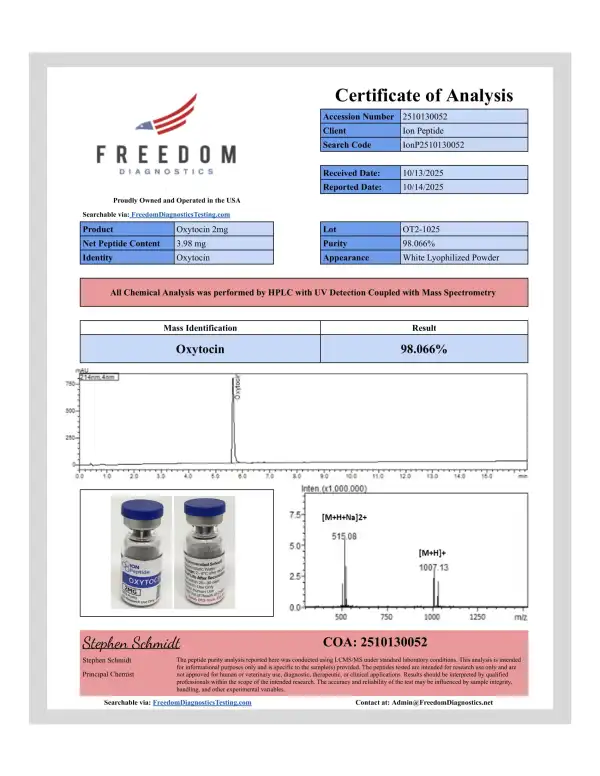
Related products
-
Cagrilintide
$ 49.00 – $ 89.00Price range: $ 49.00 through $ 89.00 Select options This product has multiple variants. The options may be chosen on the product page

